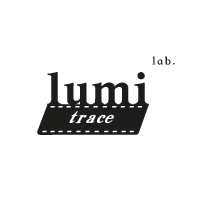
Discover the Art of Film Photography
At Lumitrace Lab, we believe in the timeless beauty of film photography. Each type of film brings its own character and charm to your wedding photos, from the warm, soft tones of Kodak Portra to the vivid, rich colors of Fujifilm Velvia.This page is dedicated to helping you understand the various film options we use and how they contribute to capturing the essence of your special day. Explore the unique qualities of 35mm and 120 film, and discover how the choice of film can enhance the mood, atmosphere, and story of your wedding photography.

135mm film, also known as 35mm film, is a beloved choice for its classic versatility and ease of use. This film format delivers a perfect balance of detail and depth, with a grain structure that enhances the texture and character of your images. Known for its rich colour reproduction and sharpness, 135mm film captures moments with a natural and timeless quality. Ideal for both portraits and landscapes, it offers a dynamic range that beautifully portrays the subtle nuances of light and shadow. Whether you're looking to preserve the warmth of a wedding day or the vibrancy of a scenic view, 135mm film provides a trusted medium for creating stunning and enduring photographs.
Why 35mm?
135mm film
One of the significant advantages of 35mm film is its cost-effectiveness, particularly when compared to medium-format film. A standard roll of 35mm film typically provides 36 frames, allowing photographers to capture more images per roll. In contrast, medium format film rolls usually offer between 10 to 16 frames, depending on the camera and format used.
This higher frame count in 35mm film means that photographers can shoot more without needing to reload as frequently, making it a more economical choice for events like weddings or street photography, where numerous shots are often necessary.

120 MM film
120 film is a medium format film known for its larger negative size, which delivers higher resolution and richer details compared to 35mm film. It’s perfect for wedding photography, capturing stunning, lifelike images with beautiful depth, making every moment look timeless and professional. Ideal for creating standout wedding portraits
Why 120?
Each frame on medium format film is much larger than on 35mm, providing richer textures, smoother tonal transitions, and more accurate color reproduction.
Each roll of 35mm film typically holds 36 exposures, while medium format rolls usually offer between 10 to 16 exposures, depending on the specific camera and format used. Despite the fewer number of exposures, the quality of each frame in medium format is significantly enhanced. The increased negative size allows for superior depth of field, better dynamic range, and more accurate color reproduction, capturing both the highlights and shadows with greater precision. This results in images with a greater sense of depth and dimensionality, making medium format film particularly suitable for creating high-quality, professional-grade wedding albums.
Popular medium format cameras like the Hasselblad 500 series, Mamiya 645, and Pentax 67 are renowned for their ability to deliver high-resolution, professional-grade images. These cameras are designed to leverage the advantages of medium format film, producing stunning, high-quality photos that have a timeless and refined appearance. In contrast, while 35mm film is more affordable and convenient with its higher number of exposures per roll, it lacks the level of detail and color richness that medium format film provides.







